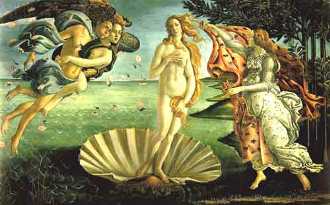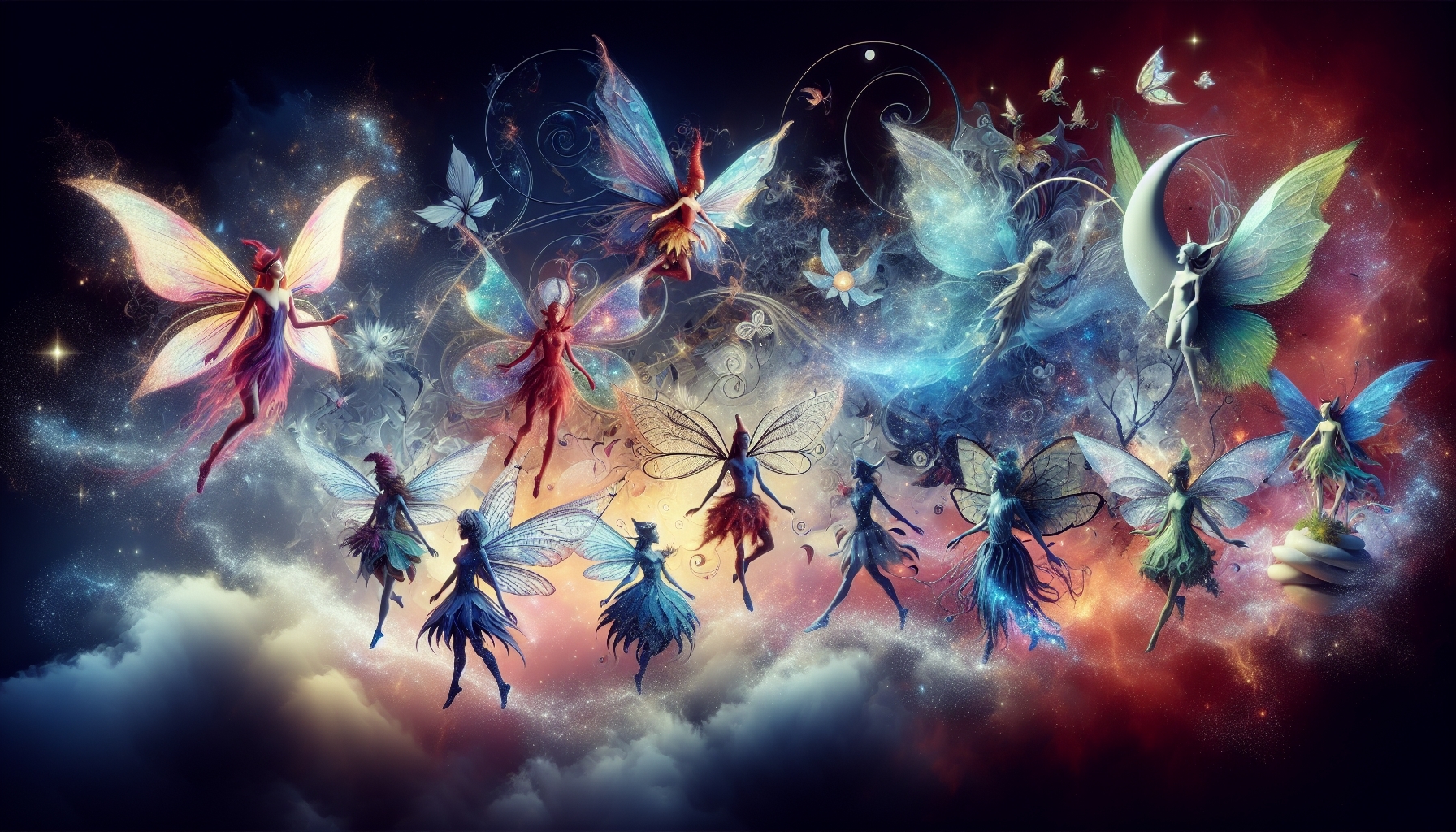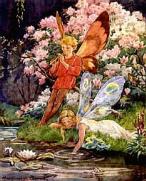Fairies in Folklore and Literature
Fairies in Folklore and Literature has tales of these fantasy creatures having interactions with humans. These beliefs from both written and oral folklore date way back to ancient times.
Traces of these fantasy creatures come from many sources:
- Fae of medieval Western European folklore.
- Sanskrit gandharva (semi divine celestial musicians)
- Nymphs of the Greeks and Homer
- Jinni of Arabic mythology
- From Many other folklore characters of the Samoans, Arctic, and other indigenous Americans.
Much of the folklore from this time revolves around protecting ourselves from malice. In particular, it describes how to prevent these
creatures from abducting older people or stealing babies and
substituting changelings for the babies. Humans, to protect themselves from these fantasy
creatures, use such means as cold iron (they don't like iron and will
not go near it) or charms made of rowan and herbs, or they totally avoid
these fantasy creatures by staying out of locations known to be
frequented by these little fairies.
Fairies in Folklore and Literature
Fairy folklore is prevalent across many countries and cultures, each with its own unique characteristics and depictions of these mythical beings. Here's a brief overview of how fairies are perceived in different countries and cultures:
- Ireland: The Aos Sí or fairies in Irish folklore are considered to be a supernatural race that live in an invisible world existing alongside the world of humans. This world is often accessed through ancient fairy mounds, or through fairy rings of mushrooms or stones. The fairies of Ireland can be benevolent or malevolent, and are often respected and feared.
- Scotland: Scottish folklore also speaks of the Aos Sí, along with the Seelie Court (the good fairies) and the Unseelie Court (the evil fairies). Brownies and selkies are also part of Scottish fairy lore. Similar to Irish folklore, fairies are respected and often feared.
- England: English folklore is rich with fairy tales, from small, insect-winged fairies to other beings like hobgoblins and brownies. Fairy rings are also prevalent in English lore, where they are thought to be portals to the fairy world.
- France: The fées of French folklore are similar to the fairies of English tradition, often depicted as beautiful and capable of either good or ill, depending on their mood. Famous French fairies include Mélusine, a water fairy often depicted with a serpent or fish tail.
- Germany: German folklore includes beings like dwarves and kobolds, which can be considered akin to fairies. The Lorelei, a siren-like being who lived on a rock in the Rhine River, is another well-known figure.
- Norse/Scandinavian: In Norse mythology, there are beings like elves and dwarfs, akin to the fairies. The huldra is a particular fairy-like creature, a beautiful woman with a hollow back like a tree trunk, who can be both benevolent and malicious.
- Slavic: In Slavic folklore, the "rusalka" are similar to water nymphs or mermaids, and "vila" are similar to the fairy beings, who live in the sky, clouds, and storms, and are usually benevolent.
- Spanish: In Spanish folklore, particularly from the Asturias and Cantabria regions, there are tales of "xanas", fairy-like beings associated with rivers and springs, who often help people who do good deeds.
- Japan: While not called fairies in a western sense, Japan's folklore includes spirits, or "yokai", that could be seen as similar in nature. For example, "kodama" are spirits that inhabit trees, and "yuki-onna" is a spirit associated with snow.
- Native American: In some Native American cultures, small nature spirits akin to fairies are often depicted, like the "Nunnehi" of the Cherokee, a race of immortal spirit people who may befriend or assist humans.
While this list isn't exhaustive, it gives an idea of how widespread and varied fairy lore is around the world, each culture lending its unique lens to the representation of these fascinating beings.
Fairies are mythical creatures that have been present in the folklore and mythologies of various cultures throughout history. While their features, roles, and characteristics may vary, fairies generally tend to be magical beings connected to nature. Here are some examples of fairies from different cultures:
These are just a few examples of fairies in different cultures, but many more exist throughout the world. Each culture's interpretation of fairies reflects their unique beliefs and values, as well as their relationship with the natural world.
Fairies in Folklore and Literature

Fairies in Folklore and Literature have been popular figures in literature for centuries, ranging from folklore and fairy tales to modern fantasy novels. They've been depicted in a variety of ways, from mischievous tricksters to powerful and benevolent beings. Here are a few notable examples of fairies in literature:
- Shakespeare's "A Midsummer Night's Dream": Perhaps the most famous depiction of fairies in literature, this play features the fairy king and queen, Oberon and Titania, as well as their mischievous servant, Puck. The fairies in this play have the power to control the natural world and influence the human characters.
- J.M. Barrie's "Peter Pan": In this story, Tinker Bell is a fairy who mends pots and kettles, and she is Peter Pan's companion. Her light, which is her life, flickers when she is weak or ill, representing the fragile and ephemeral nature of fairies.
- Andrew Lang's Fairy Books: This is a series of twelve collections of fairy tales published between 1889 and 1910. Each book is distinguished by its own color. The collections contain stories from various cultures, all involving mythical creatures, including fairies.
- The Brothers Grimm Fairy Tales: Jacob and Wilhelm Grimm compiled a collection of European fairy tales, many of which involve fairies or similar magical creatures. Examples include "The Elves and the Shoemaker" and "Rumpelstiltskin".
- Charles Perrault's "Sleeping Beauty": The fairy godmothers are central figures in this tale, with their magic setting the plot in motion. One fairy's curse causes the princess to fall into a deep sleep, while the others help mitigate the curse's effects.
- Holly Black's Modern Faerie Tales Series: This is a series of novels that depict fairies living in the modern world and interacting with humans. The series includes "Tithe", "Valiant", and "Ironside".
- Terry Pratchett's Discworld Series: In this series, fairies are portrayed in a more menacing light. Known as "The Lords and Ladies", they are beautiful but cruel and enjoy playing with time and human lives.
- Suzanne Collins' "Gregor the Overlander": This series features giant luminous butterflies that fulfill a role similar to fairies as guides and mystical helpers to the protagonist.
The representation of fairies in literature has evolved over the centuries, reflecting changing cultural attitudes towards these mythical beings.

Not All Fairies Were Good In Folklore
Fairies in World Folklore and Literature are just like people, fairies can be good or bad, depending on the stories we tell about them. Here are some examples of "bad" or naughty fairies:
- Unseelie Court: These fairies from Scotland love to play tricks and sometimes can be mean to people. They're like the naughty kids in the fairy world!
- The Sluagh: These are spooky fairies from Ireland and Scotland who act like ghosts, flying around in groups and trying to scare people.
- Redcap: Redcaps are small, mean creatures that live in old castles between England and Scotland. They have red hats because they dip them in the blood of their victims. (A bit scary, right?)
- Banshee: In Ireland, people believe in the Banshee. She's not exactly evil, but she's feared because when she cries, it means someone is going to die.
- Jenny Greenteeth: Jenny is a naughty water fairy from England. She hides in ponds and rivers, and tries to pull people into the water. It's always good to be careful around water!
- Changelings: In many places in Europe, people believed that fairies would sometimes switch human babies with their own. The fairy babies were called changelings and were known to cause mischief and bad luck.
- Nuckelavee: This is a scary fairy from Orkney, which is a place in Scotland. It looks like a creepy horse and can cause disease and ruin crops.
- Bluecap: A bluecap is a fairy that looks like a little blue flame. They live in mines and if they move away, it means the mine might collapse!
And remember Maleficent from "Sleeping Beauty"? She's a fairy who becomes bad and decides to curse the princess. So, just like in real life, there can be nice and not-so-nice fairies in stories too!
Today, the depictions, of Fairy Godmothers, especially in children's stories, rest largely upon the old folklore tradition. Here they were generally described as serious and sinister. There are some exceptions that include the one that swaps children's teeth for gifts, the Godmother in "Cinderella" and "Snow White and The Seven Dwarfs". Folklore about these mystical creatures is particularly prevalent in Ireland, Wales, and Scotland.
So, you see, fairies are just like characters in any story. They can be good, they can be bad, they can be funny or scary. The important thing to remember is that these stories are just that, stories. They help us understand things about the world, like why we should be careful around water (thanks, Jenny Greenteeth) or why it's important to be kind (unlike the Unseelie Court).
Just because these fairies are naughty doesn't mean all fairies are bad. There are many tales of kind and helpful fairies, too! In the end, whether good or bad, fairies make our world a more interesting and magical place, at least in our imaginations. So the next time you see a ring of mushrooms or a strange little flame, who knows? Maybe there's a fairy story waiting to happen. Sweet dreams and happy fairy-tale adventures!


